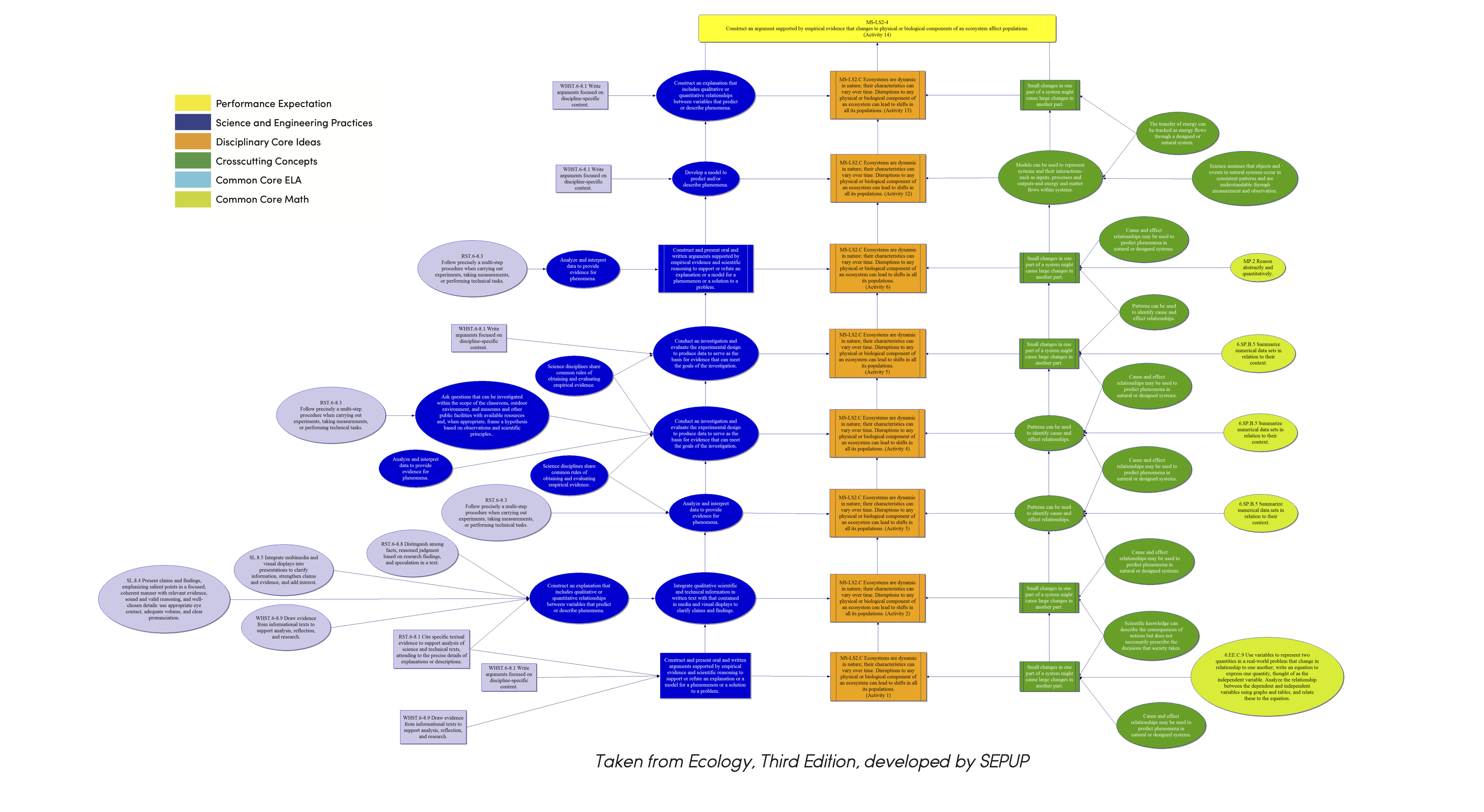
These Learning Pathways are used in unit development by SEPUP, at the Lawrence Hall of Science, in the same way schools are using multi-colored stickies to ensure the three dimensions are authentically intertwined in the activity and unit design. Starting at the bottom and moving up towards the Performance Expectation, specific unit activities are identified at the Disciplinary Core Idea, and connected to the Science and Engineering Practices, Cross-Cutting Concepts, and Common Core standards for Math and ELA. Those in rectangular boxes are the suggested connections identified in the NGSS, while the ovals represent additional connections made within the SEPUP unit.
Each Performance Expectation, in yellow, comes at the top of the Learning Pathway. Each instructional unit bundles numerous Performance Expectations, therefore an activity may be part of several intertwined Learning Pathways. By the time the student reaches the activity incorporating the assessment related to the Performance Expectation, he or she will have interacted with the content, practices, and crosscutting concepts numerous times in their learning journey.
Additionally, for every unit, there are three overviews in a more traditional table format. The SEPUP Overview describes what students do in each activity, the locations and types of assessments, which activities include literacy strategies, notes on advance preparation, and the recommended number of teaching periods. The NGSS Overview shows the integration of the three dimensions in each activity, connections to the Common Core State Standards for both English Language Arts/Literacy and Mathematics, and where each performance expectation is assessed. The Phenomena, Driving Questions, and Storyline Overview describes the conceptual flow (storyline) of the unit, and the anchoring phenomena and issues driving the instructional sequences. These sequences make transparent Learning Pathways for students as they progress toward the assessments of the bundled performance expectations.